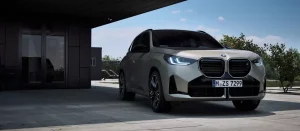How Augmented Reality Is Reshaping Car Maintenance and Repairs

Imagine pointing your phone at a squeaky engine and instantly seeing a floating diagram showing exactly which bolt needs tightening. That’s not sci-fi—it’s happening right now in garages worldwide. Augmented reality (AR) is quietly revolutionizing how we fix cars, turning guesswork into guided precision.
The AR Garage: No More “Blind” Repairs
Mechanics—both pros and DIYers—used to rely on manuals, YouTube tutorials, or plain old trial-and-error. AR changes the game by overlaying digital instructions onto real-world car parts. Here’s how:
- Real-time guidance: AR glasses highlight the exact location of a faulty sensor or leaking hose.
- Interactive manuals: Step-by-step animations show torque specs or wiring routes superimposed on the actual vehicle.
- Error prevention: The tech warns if you’re about to cross-thread a bolt or disconnect the wrong cable.
Take BMW’s AR repair glasses—mechanics complete tasks 30% faster with fewer mistakes. That’s huge when your alternator dies on a road trip.
Beyond the Shop Floor: AR for Everyday Drivers
You don’t need a mechanic’s certification to benefit. Apps like WrenchAR let car owners:
- Diagnose check-engine lights by scanning the dashboard (goodbye, frantic Google searches).
- See virtual arrows pointing to the oil filter cap or battery terminals during DIY changes.
- Get instant access to recall notices or service history by aiming their phone at the VIN plate.
Honestly, it’s like having a mechanic whispering over your shoulder—minus the labor fees.
The Data Behind the Glasses
| AR Repair Stat | Impact |
| First-time fix rate | Up 47% (Porsche dealers) |
| Training time reduction | 40% fewer hours (Ford Techs) |
| Customer wait times | 22% shorter (J.D. Power 2023) |
Remote Help: The Rise of AR Telemechanic
Here’s where it gets wild. Stranded with a dead battery in nowhere, Nebraska? A specialist can now:
- View your engine bay through your phone’s camera.
- Draw digital arrows and notes directly onto your screen.
- Guide you through jump-starting or fuse checks in real time.
Companies like Help Lightning already power this for fleet trucks—cutting downtime by hours. It’s FaceTime meets Car Talk, with less guesswork.
The Hurdles (Because Nothing’s Perfect)
Sure, AR isn’t magic. Early adopters face:
- Glare and grime: Greasy fingers and garage lighting can confuse AR sensors.
- Model coverage gaps: Older cars might lack detailed digital schematics.
- Cost barriers: High-end AR headsets still run $2,000+—though phones bridge the gap.
That said, as 5G spreads and AI gets sharper, these wrinkles will smooth out. Like any tool, it’s about using it where it shines.
The Road Ahead: AR as Standard Equipment
Car makers are baking AR into vehicles themselves. Hyundai’s Virtual Guide uses windshield projections to point out maintenance needs while you drive. Imagine your car saying, “Hey, your left brake pad’s at 15%—here’s the nearest shop.”
We’re heading toward a world where cars maintain themselves—or at least tell us how. No more “mystery noises.” No more lying on cold garage floors squinting at diagrams. Just repairs that feel… well, augmented.




